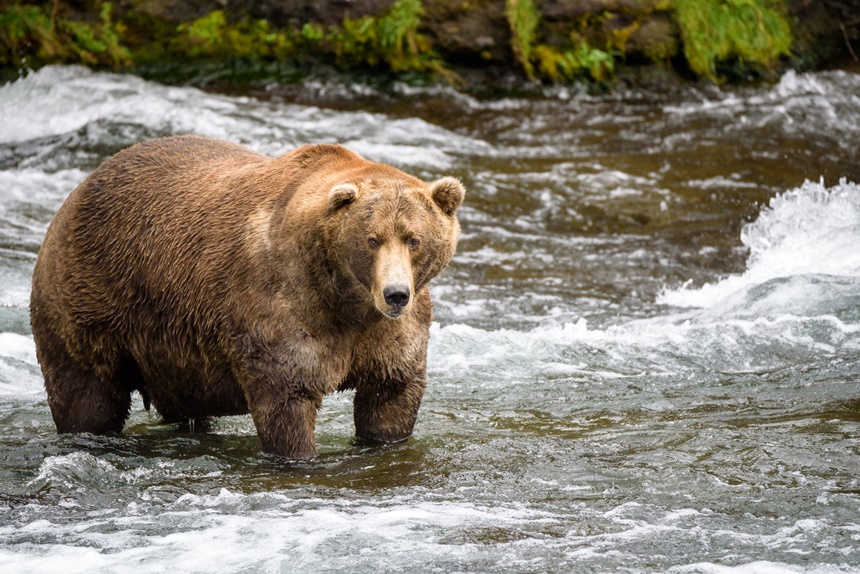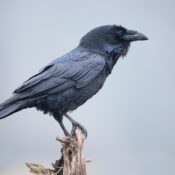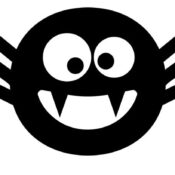Most of us have seen a version of the “Guess How Many Jellybeans in the Jar” game, even if we never tried it. Whether a pint-size Mason jar or a five-gallon glass carboy, the premise is the same: the person whose guess is closest to the actual number of jellybeans gets a reward.
Given that the “prize” is usually a wicked sugar hangover, i.e., all the jellybeans in the vessel at hand, few people took the game seriously in the past. These days, there are web tools that give jellybean estimates in a few seconds, so this once-lighthearted game is now less intriguing. There’s a certain je ne sais quoi allure to trying one’s hand at a near-hopeless task.
I figure that’s why in 2014, Mike Fitz, who at that time worked as a National Park ranger, invented Fat Bear Week. It’s a game where people guess how many jellybeans would fit inside the fattest, roundest Alaskan brown bear. From June through early October, bears gorge on salmon that course upstream to spawn in Alaska’s Katmai National Park and Preserve, about 250 miles southeast of Anchorage. Five salmon species are present in the park, and bears need the extra calories to survive winter hibernation.
Most participants view the bears remotely, but a few hardy souls risk life and limb, getting as close as possible to some of the largest land animals in North America. In the interest of what most people would call “honesty,” I should tell you that Fat Bear Week has nothing to do with jellybeans. It’s about choosing which critter is more circumferentially challenged. The jellybean idea just sounded like a fun twist – maybe I’ll pitch it for next year.
Brown bears must’ve hired the same public-relations firm that named a tree-killing bug the velvet longhorned beetle. A forest pest that conjures both the cuddliness of the Velveteen Rabbit and the romance of Texas Longhorns is a cunningly clever PR move. In a similar way, “brown bear” sounds adorable. After all, Paddington Bear is brown, and cute as a button.
In reality, Alaskan brown bears and grizzly bears are the same species, except that brown bears, a coastal population, get a lot bigger than their inland-dwelling cousins. That’s right: during Fat Bear Week, folks come from all over to get up-close and personal with bears that make Grizzlies look puny. And they do this just to hazard a guess as to which leviathan is largest. I bet they’re the same lot who’d enjoy “Longest Pit-Viper Week” if such a thing existed.
Less than 100 miles from Katmai National Park is Kodiak Island, home to a subspecies of brown bears, the Kodiak bear. These impressive creatures are eight to ten feet tall on their hind legs, and average more than 1,500 pounds (the record is 2,130). By contrast, Grizzlies typically weigh between 400 and 790 pounds, and stand six to seven feet tall. It was probably a wise move not to hold Fat Bear Week on Kodiak Island.
In general, I like outdoor activities, especially when they don’t involve spandex or pricey toys. Not so much in this case – I’ll watch online. Although bear attacks are quite infrequent, with around 12 per year in North America, it seems a bad idea to hang out and ogle bears while they eat. Not to mention you could risk the ire of a brown bear by taking a picture at its heaviest weight of the year.
Of course, no one’s foolish enough to try and get one of these critters on a scale. A National Parks technician named Joel Cusick had the bright idea of using a laser scanner to measure each bear’s volume, from which its weight can be derived. It’s non-invasive, benign, and fast. He’s able to scan up to 80 bears a season at salmon choke-points like Brooks Falls, where a live-feed bear-cam is set up. Bears at Brooks Falls are often logy due to the huge volume of fish available, which makes scanning easier.
Last year’s champion was a male dubbed “747,” as in jumbo-jet-size. According to the scan, he was 680 liters in volume, which works out to 1,400 pounds. If we trust my math, and the Wikibooks.org value of 3.5325 cubic centimeters per jellybean, Mr. 747 could fit 192,498 candies in his corpulent form. Instead, he ate up to 30 salmon per day (over 100 pounds) during the salmon run; for sure, a better choice.
In 2022, Fat Bear Week was rocked by its first-ever scandal. Ballot-stuffing, aptly enough. When an Internet bot was found to have generated 6,000 fake votes, the problem was resolved with a little cybersecurity belt-tightening.
To cast your honest vote for this year’s best-fed bear, first check out the photos, bear-cam links, and schedule of events on the Katmai National Park website. Once voting begins (September 30 for the new “Junior” cub category, and October 5 for adult bears), head to Fat Bear Week’s official voting platform and tell the world who you think is the biggest bear on the ballot. In case you’re wondering what trophy awaits those whose guess is correct, the answer is: outside of bragging rights, absolutely nothing. Way better than jellybeans, in my opinion.
Become a Saturday Evening Post member and enjoy unlimited access. Subscribe now




Comments
One of these days, the bears may want the name changed to ‘Pleasingly Plump Bear Week’. Meanwhile, I appreciate knowing about this, and checking out the helpful enclosed links. Bears are wonderful animals. So are lions and tigers, but viewed from still photos and videos. Real life is best left to the professionals where the risk is much lower.